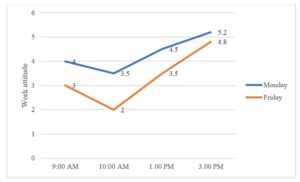Author Guidelines -SLJN
Aims and Scope
Sri Lankan Journal of Nursing (SLJN) is a peer-reviewed journal published annually by the Graduate Nurses’ Foundation of Sri Lanka (GNFSL). The journal provides a forum for nurses to publish quality research related to all aspects of nursing including but not limited to nursing education, clinical nursing, nursing management and leadership and public health nursing.
The primary aim of the journal is to promote and share high standard research findings for enhancement of safe and effective care for the public by nurses in collaboration with other health professionals. Further, the SLJN promotes evidence-based practice through the diversity of research and scholarship.
Types of Manuscripts
The Sri Lankan Journal of Nursing welcomes submissions from the following categories;
- Original (full) Research Papers
- Brief Reports
- Review articles
- Letters to the editor
Article Submission
Submissions can be done to the Editor-in-Chief through the email address- sljngnf@gmail.com. Manuscripts should be submitted by one of the authors, who will act as the Corresponding Author.
- Title page
- Manuscript (in word format)
- Cover letter- prepared according to the ‘Sample Covering Letter’
- Author declaration form- prepared according to the ‘Sample Declaration Form..’
- Certification for Ethical Clearance
Preparation of Title Page:
The title page should include:
- A concise and informative title
- The manuscript category
- Surname and initials of all authors (ex: Silva, N.A., Perera, X. and Gorden, P.Y) (Indicate the corresponding author with an asterisk (*) mark
- Affiliation(s) of the author(s), i.e. institution, city, country
- Name, contact details of the corresponding author with an active e-mail address
- Word count of the abstract and the manuscript
- Acknowledgement of funding (if applicable)
Preparation of manuscript
The manuscript must be prepared according to the following guidelines;
- The manuscript should be free of errors and written in British English.
- It should be prepared in single column with Times New Roman size 12 font, 1.5 point line-spaced, 2.5 cm margins and justified using an A4 paper.
- There should be one line space between each paragraph and no line space between sub-titles and paragraphs.
- The order of content in full research articles, reviews and brief reports should be; Title, Abstract, Keywords, Introduction, Methods, Results, Discussion, Conclusions, References (a combined result and discussion section is also accepted where appropriate).
- Conflict of interest statement should be included before the references.
- Tables and figures should be inserted within the text where they should appear.
- Word limits for articles should not exceed; 4000 words for full research articles, 3000 words for review articles, 2000 words for brief reports, and 1000 words for a letter to the editor. The abstract should not exceed 300 words. [abstract, tables, figures, funding/conflict of interest statement and references are not included in word count].
- Pages should be numbered consecutively.
Title:
The manuscript’s title should be clear, precise and concise and should include all the necessary information related to the scope of the article.
Abstract:
The abstract should not exceed 300 words and should be devoid of citations and abbreviations. It must include background and objective the method, major results, and conclusions under subheadings.
Keywords:
A maximum of five (5) keywords representing key contents of the article should be included.
Introduction:
The Introduction should explain the scope of study giving adequate background information with the existing literature, aims and the objectives and significance of the study.
Methods:
Methods used in the study should be clearly explained in detail; study design, settings, and all procedures followed for data collections, statistical analysis (if applicable). Survey-based studies should include study approach and design, sample population, sample size, study instrument, data collection, and analysis. All papers must state the full name of the ethics review committee and the approval number. A copy of the approval notice should be submitted with the manuscript.
Results
The results section should present the main findings of the study clearly and logically. Findings described in the text should be consistent with the relevant tables and figures and should be numbered and cited in the text in consecutive numerical order.
Tables
Tables should be clear and prepared without vertical gridlines. Tables should be numbered according to the order of their occurrence in the text (e.g., Table 1, Table 2, etc.). Table captions should explain the appropriate components of the table and all abbreviations must be defined in footnotes. The maximum number of tables should be five (05). Tables should not be presented as images.
Sample Table
Table 1: Baseline socio-demographic characteristics (N=210)
| Characteristics | Category | n (%) |
| Age (in years) | <25 | 50 (23.8) |
| 25 – 40 | 100 (47.6) | |
| ≥ 41 | 60 (28.6) | |
| Sex | Male | 100 (47.6) |
| Female | 110 (53.4) |
N – frequency
Figures
Figures (graphs, charts, drawings, photographs) should be numbered according to the order of their occurrence in the text (Figure 1, Figure 2, etc.). Figure captions should be provided to explain the figures appropriately. The maximum number of figures should be four (4).
Sample Figure
Figure 1: Changes in work attitude as a function of day and time

| Time of the day |
Discussion
The discussion should include interpretation of the findings in comparison with previous studies.
Conclusions
The conclusion/s of the study highlight the significant findings of the study considering the aims/objectives of the study. In addition, implications and recommendations should be clearly stated.
References
A list of references cited should be presented according to the APA format (7th edition). All references should be cited in the text and vice-versa. In-text citations and references should be format as specified in below table. For more information refer https://apastyle.apa.org/
| Reference type | In-text citation | Reference List |
| Book & ebook with DOI | (Perera et al., 2014)
or according to Perera et al. (2014) |
Perera, E. W., Silva, D. S., & Gunasekara, J. R. (2014). Nursing education. CPD International. https://doi.org/10.1079/9782545939199.0000 |
| Book & ebook without DOI | (Silva, 2018) or According to Silva (2018) | Silva, G. R. (2018). Nursing education in Sri Lanka. Entrepreneur Press. |
| Article with DOI | (Perera, 2020) or Perera (2020) stated that | Perera, E. T. (2020). Nursing education in Sri Lanka. Sri Lankan Journal of Nursing, 1(1), 21–27. https://doi.org/10.2267/1045159514558412 |
| Article without DOI | (Perera, 2019) or Perera (2019) | Perera, M. S. (2020). Nursing education in Sri Lanka. Sri Lankan Journal of Nursing, 2(3), 20–25. |
| Author | In-text citation | Reference List |
| One author | … (Jayasekara, 2009) or Jayasekara (2009) stated that … | Jayasekara, R. S. (2009). Issues, challenges and vision for the future of the nursing profession in Sri Lanka: a review. International Nursing Review, 56(1), 21-27. https://doi.org/10.1111/j.1466-7657.2008.00657.x |
| Two authors | (Rathnayake & Ekanayaka, 2016) or Rathnayake and Ekanayaka (2016) … | Rathnayake, S., & Ekanayaka, J. (2016). Depression, anxiety, and stress among undergraduate nursing students in a public university in Sri Lanka. International Journal of Caring Sciences, 9(3), 1020-1032. |
| 3 or more authors, up to 20 authors | (Aluwihare‐Samaranayake., 2017) or Aluwihare‐Samaranayake et al. (2017) stated that … | Aluwihare‐Samaranayake, D., Ogilvie, L., Cummings, G. G., & Gellatly, I. R. (2017). The nursing profession in Sri Lanka: Time for policy changes. International Nursing Review, 64(3), 363-370. |
| 21 or more authors | (Loannidis et al., 2016) or Loannidis et al. (2016) stated …. | Loannidis, N. M., Rothstein, J. H., Pejaver, V., Middha, S., McDonnell, S., Baheti, S. Musolf, A., Li, Q., Holzinger, E., Karyadi, D., Cannon-Albright, L., Teerlink, C. C., Stanford, J. L., Isaacs, W. B., Xu, J.,Cooney, K., Lange, E., Schleutker, J., Carpten, J. D., … Weiver, S. (2016). Revel: An ensemble method for predicting the pathogenicity of rare missense variants. American Journal of Human Genetics, 99(4), 877–885. https://doi.org/10.1016/j.ajhg.2016.08.016 |
Headings
The headings should appear in 14-point bold type in Upper- and Lower-case letters as appropriate. Sub-Headings should appear in 12-point bold type in Upper- and lower-case letters as appropriate. Lower level sub-headings (Sub-sub-headings) should be in 12point upper- and lower-case italics as appropriate. Use headings and sub-headings as needed.
Peer-review Policy
The journal adheres to a rigorous double-blind peer reviewing policy. A manuscript submitted to the journal will undergo initial reviewing by editor-in chief to ensure its scientific merit and its relevance to the scope of the journal.
A minimum of two (02) reviewers are assigned by the editorial board for a selected manuscript considering their expertise and the subject area. The peer-review process will take four to six weeks. Upon receipt of the two reviewer reports, a decision will be made on the manuscript based on the following, and the corresponding author will be notified accordingly.
- accepted as received
- accepted after satisfactory completion of minor amendments
- reconsider after major revision
- rejected
The authors are requested to revise the manuscript if required, according to the comments made by the reviewers within a period of 3-4 weeks. The revised version of the manuscript will be sent to the reviewers for a second review when clarifications are needed and for further comments, in some cases. The manuscript will be revised by an editorial board member once again before a final decision is made by the editor-in chief on the acceptance. All decisions are communicated in writing to the corresponding author. Accepted manuscripts will undergo editorial revision and language editing before publishing.
Editors who submit manuscripts, either as corresponding author or contributing author will not take part in the peer-review process of their manuscript.
Copyright and copying
The contents of this journal are copyright-protected. Any part of SLJN may be reproduced, transmitted or stored in any form or any means after obtaining permission from the journal acknowledging the source as the SLJN.
Licensing statement
It is a condition of publication that manuscripts submitted to this journal should not have been published elsewhere. Articles are published under the Creative Commons Attribution-Share Alike 4.0 International License (CC-BY-SA). This license permits use, distribution and reproduction in any medium; provided it is licensed under the same terms and the
original work is properly cited.
Article-processing Charges:
Authors pay a one-time Article Processing Charge (Rs. 5,000.00) to cover the costs of printing the journal once an article is accepted for publication. There will be no surcharges based on the length of an article, figures, or supplementary data.
Funding Statement
This section should consist of an acknowledgment of all funding sources that supported the submitted work, as well as any commercial association that could pose a conflict of interest or create a bias.
Conflicts of Interest
All authors should declare any relevant conflicts of interest.
Author Declaration
An author declaration form should be signed by all the authors involved to ensure their contribution.
Plagiarism Policy
All authors are requested to check their manuscripts for plagiarism before submission. Manuscripts should not contain more than 20% of plagiarized matters.
Ethical Responsibilities
The manuscript contents should not be published elsewhere.
Ethical Approval
A copy of the ethical clearance certificate from a recognized ethics review committee should be submitted along with the manuscript for the studies involving humans. Information on ethics approval and informed consent/assent procedures should be clearly mentioned in the methods section of the manuscript.
Privacy Statement
The personal details provided by the authors (e.g. names and e-mail addresses) will be used absolutely for the stated purposes of the journal and will not be made available for any other purpose or to any other party.

